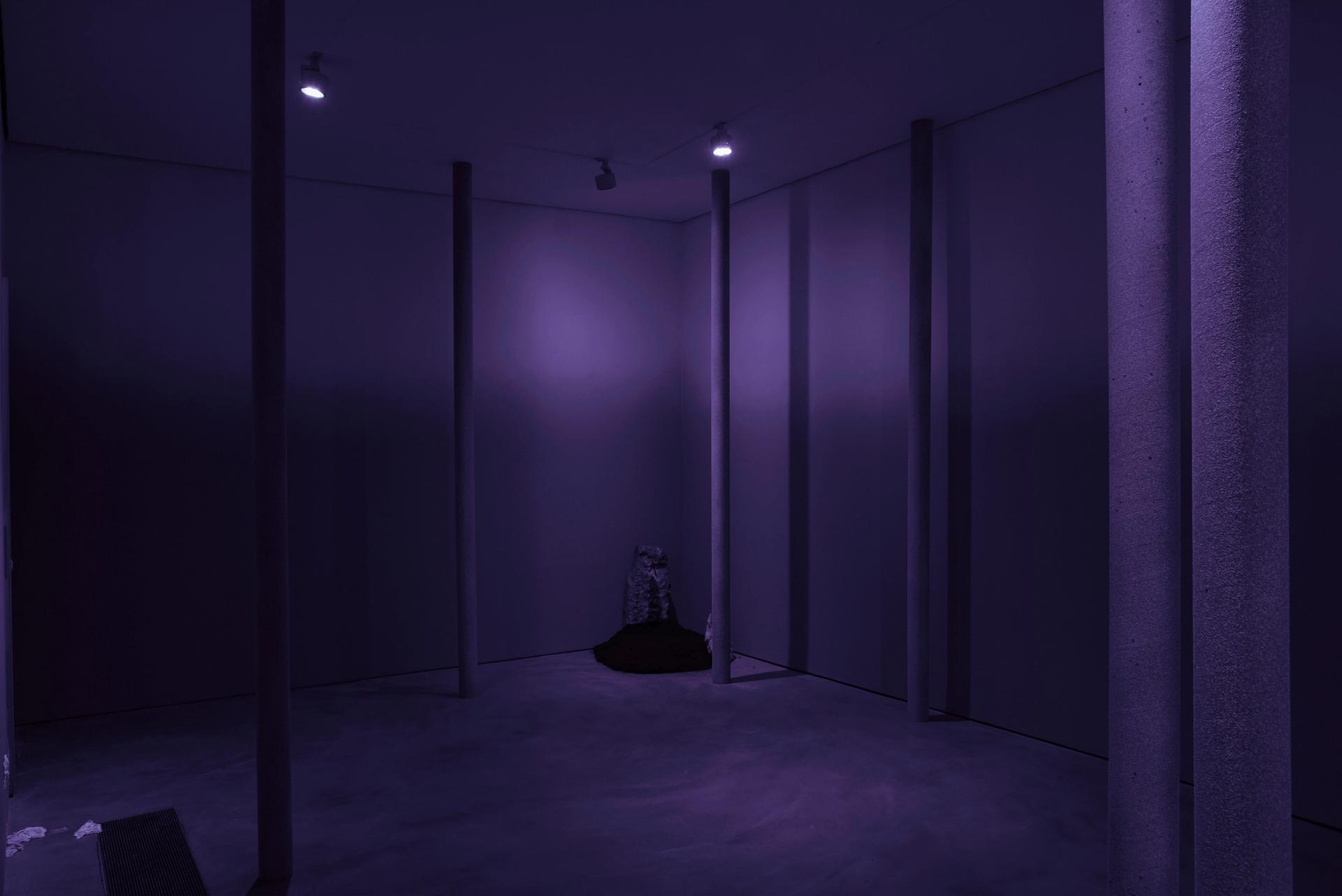Like many of us, the artist Trevor Yeung spent his time during the Covid-19 lockdowns in London taking long walks. And, perhaps like a smaller number of us, some of those walks turned into gay cruising excursions in the city’s sprawling Hampstead Heath park. But Yeung, it turns out, was using these trips not for pleasure, but research.
The fruits of his labour are now on show across the river at Gasworks. For his solo exhibition Soft Ground (until 17 December) he has placed a replica of a tree trunk from the heath, made from soap, horizontally on the floor in the dimly lit main gallery. After adjusting their eyes to the darkness, north London dog walkers and doggers alike might recognise this as resembling the notorious “fuck tree”, the roots of which grow at an angle that positions its trunk very low to the ground, making it highly advantageous for one, two—or even five—people to lie on top of it. Human intervention has moulded the tree, too: so regularly do amorous heath-goers rub up and down against this beleaguered oak that sections of its bark have been buffed smooth.
“This tree is a physical embodiment of desire, that most enigmatic of feelings. It’s a monument to human interactions,” Yeung says. He compares the surface of the tree to the stone steps of ancient temples, polished and eroded over centuries by the feet of devotees. Indeed, the tree has acquired a totemic status among the city's queer community.

Installation view of Soft Ground at Gasworks
Courtesy of Gasworks
Yeung, who will represent Hong Kong at the next Venice Biennale, relates this project to his wider fascination in decoding systems. “I am fascinated by the unspoken rules of gay cruising culture: what you can and can’t say, or do; how people move around the space.” Previous projects of his, in Beijing and at the offsite Cruising Pavilion at the 2018 Venice Architecture Biennale, have explored gay sauna culture.
Certainly Yeung does not shy away from the carnal associations of the "fuck tree", yet his London show is about more than just cruising. Or rather, it is a show about cruising in its totality—from its motivations to its execution and aftermath—which considers the charged network of social and sexual relations in which the act takes place.
Yeung attempts to explicate this network by recreating not just the tree, but his experience of its environment. The soap used to mould the tree is imbued with an "earthy" scent: a combination of musk, soil and wood. "Smell is highly important when cruising at nighttime," he says. "You can't see so your other senses are heightened."
Meanwhile, the exhibition's dim lighting recreates how the artist, who has poor eyesight, might experience the site at nighttime, while also inviting viewers to consider how cruising grounds can be both spaces of sanctuary and danger.
The byproducts of human interactions on the Heath are also present: Yeung has gathered litter from the site and strewn it across sections of the floor ("people don't think about recycling when they are horny," he says). Also foraged from the Heath are acorns, now suspended from the ceiling like raindrops frozen in time.
Yeung says that he has been to the Heath at least 20 times to observe the action, interview cruisers and scour the scene for human traces left behind. "It's like fishing, you sometimes have to wait and wait to catch something," he says. Notably, Yeung does not engage in sexual acts himself when undertaking this fieldwork. “I position myself as the voyeur—in possibly a similar position to the tree: a bystander. I am not there to engage in, or even watch, the intercourse. I am there to observe human interactions within space.”
The show will travel to Hong Kong and China next year. As for the Hong Kong pavilion, Yeung remains tight lipped, but says that his work there will connect the bodies of water in Hong Kong and Venice and contain "plant elements". What exactly we might see—or smell—will be revealed in due course, though judging from the Gasworks show, the work will likely be as elusive as it is explicit.


